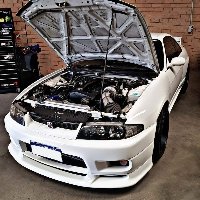Dba 4000 T3 Rotors - Catastrophic Failure At Track
Announcements
-
Similar Content
-
Latest Posts
-
Maf is a question mark but TPS I have set at 0.47, the fact that I’m getting proper voltage range out of it with the key on leads me to believe it’s functioning properly. I’m getting proper voltages on basically everything. I still need to look up voltage ranges for z32 maf and test that
-
Honestly no not at all, but it’s a very basic tune, it’s stock injectors q45 tps and z32 maf. Other than that it’s a completely stock base map. The file is from nistune and from my understanding if it was tune related I would be able to unplug maf and tps and it would still start even if it was a really shitty start. I have tried starting it with coolant temp, maf, and tps unplugged none of those 3 togethor or individually changes anything
-
🏆 Skyline Supremacy Meets Mount Panorama Magic 🏆 Join SAU NSW as we take the long way to Bathurst, the home of GTR greatness. Saturday 30th August 2025 7:00AM Meeting Hanna Park North Richmond 7:30AM Departure Cruise Via Bells of Line Road 9:00AM Arrival to Stop 1: Golden Poplars Meadow Flat 9:45AM Arrival to Final Destination: Mount Panorama Motor Racing Circuit Meet Location: Hanna Park North Richmond Stop 1: Golden Poplars Meadow Flat Final Destination: Mount Panorama Motor Racing Circuit *Disclaimer* There will be a lead and follow car so no one should get lost. If you would like to attend or bring others along please put your name down and a +1 as numbers will be needed prior! This is NOT a race and we will all be adhering to all road rules. If this is what you want please come to one of our many track days. This is an official SAU:NSW event and will be run under a CAMS permit. One of the things that really sets our club apart is our commitment to being true enthusiasts. When on normal roads we strive to maintain good relations with the authorities as well as the public in general. When attending one of Skylines Australia NSW events please try to: • Be aware of surrounding environment and act accordingly. • Drive courteously on the state’s roads as a true enthusiast should. • Understand how important it is to maintain the good name of SAU NSW and thus, treat others accordingly. • Any misbehavior will not be tolerated and you will be asked to leave.
-
By soviet_merlin · Posted
What does it look like with highway driving? And yes, I had a similar thought as Duncan. It looks quite similar in my Stagea and I have made myself accept it as normal. Might have to look into it some day Highway gets as low as 10l/100km on my end so I'm not as worried about it being a mechanical issue. More likely just the tune on the haltech. -
While I was waiting for the new parts to come in for the charge pipe and radiator I decided to do some turbo modification. The drive pressure (exhaust backpressure) was a lot higher that I thought it should be. For 32lbs of boost drive was 55lbs. The turbine housing is a 1.10AR and my turbo builder has suggested to go to a 1.25AR. To test if a larger AR would do anything to reduce drive pressure AND not spend any money I decided to hog out the divider in my current housing. I removed it from the inlet and the whole way through the housing. After reassembly and testing it doesn't look like this modification did anything for reducing drive pressure or requiring more fuel (making more power). Oh well, it was worth a shot. We'll get some data at the track if it makes it past the 60ft. I also machined a $7 shift knob off Amazon to fit my Stillway shifter since I didn't like the Stillway shift knob. Next on the list was the radiator replacement and fabrication of a new intercooler tube that had no silicon coupler. No pictures of this - I was short on time each night after work to get this done and didn't stop to take pictures. Next was to get the clutch disks out and replaced. Previously when installing the dogbox I had ordered a set of the same sintered iron disks I had been running because I switched to the 26-spline input shaft. I thought it was odd that they didn't have any markings or brand name on them like all my old disks had but installed them anyway. At the track I could not get the clutch to lock up using my normal strategies. After two track nights I reached out to the clutch manufacturer and ask their thoughts. They said they had to switch the material out because they were having trouble getting the original material and that this new material would not take to being slipped very well. So out with the first set of 26-spline disks and in with the correct material 26-spline disks. While I had the trans out I added an inspection/service hole. I've wanted one of these for a while. Now I can have a look at things and change the front cover shimming when needed (clutch wear). I hustled and got the clutch change done in a few hours on a Saturday. Hopped in the car and drove home. On the way home I did a 1-3 pull. When shifting from 2nd to 3rd the core plug in the back of the cylinder head popped out and dumped all the coolant. Thankfully I was only 30 seconds from home and coasted it there. Datalog showed nothing unusual and 2.5psi of coolant pressure. That plug has been in there since 1992 but I guess it worked its way out. Pulled the trans AGAIN and replaced the plug, JB welded it in, and made a brace. Also deleted the head drain I had added in during the bearing issue fiasco. I am currently changing my boost control plumbing to make it cleaner. After that is done I'll make another attempt at getting past the 60.
-











Recommended Posts
Create an account or sign in to comment
You need to be a member in order to leave a comment
Create an account
Sign up for a new account in our community. It's easy!
Register a new accountSign in
Already have an account? Sign in here.
Sign In Now